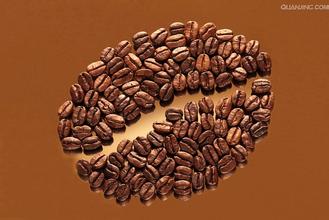Brazilian coffee roasting degree Milas Gerais
Low acidity, moderately roasted coffee beans from the World Coffee Center
Brazil is vividly compared to the "giant" and "monarch" of the coffee world. There are about 3.97 billion coffee trees there, and small farmers now grow 75% of the country's coffee. The number of coffee producers in Brazil is twice or even three times that of Colombia, the second largest coffee producer in the world.
Unlike in the past, Brazil's economy is now less dependent on coffee, which accounts for only 8% to 10% of GDP. Before World War II, Brazilian coffee
The output accounts for 50% or more of the world's output, which is now close to 30%, but the country's impact on the world coffee, especially on the price of coffee, is of great importance. For example, two frost disasters were cited in 1994.
The global price of coffee has skyrocketed.
Since the introduction of coffee trees from French Guiana (Guyana) in 1720, coffee production has gradually become a science. Before 1990, the Brazilian government carried out strict monitoring of the coffee industry, with both strict intervention and
There are price protection measures, and the state has been implementing minimum price protection measures for farmers, resulting in overproduction of coffee. Before World War II, there were as many as 78 million bags left in stock, which had to be burned down or
Throw it into the water and destroy it.
Since the opening of the free market in 1990, the original Brazilian Coffee Authority (IBC) has been replaced by the National Economic Association, the country's non-investment administrative body, which pursues a policy of non-interference, allowing producers to work with
Oral merchants negotiate directly. The business activities of exporters are supervised by the government legislation, and the relevant departments register legitimate exporters.
As there are so many kinds of Brazilian coffee in Brazil, you can't just use the word "Brazilian coffee" to include it. Just like it.
Like Arabica coffee, Brazilian coffee is called "Brazils" to distinguish it from "Milds" coffee. The vast majority of Brazilian coffee is unwashed and sun-dried, based on the name of the state of origin and the port of transport.
classification. Brazil has 21 states and 17 states produce coffee, but four of them produce the largest, accounting for 98% of the country's total output. They are: Parana and Sao
The states of Paulo, Minas Gerais and Espirito Santo, and Parana in the south have the most astonishing production, accounting for 50 per cent of total production.
Although coffee is diverse, Brazilian coffee is suitable for the taste of the public. For example, coffee produced in the northern coastal areas has a typical iodine taste, reminiscent of the sea after drinking. This coffee is exported to North America, the Middle East and Eastern Europe.
Another kind of coffee that is interesting and worth looking for is washed Bahia coffee. This kind of coffee is not easy to find because Brazil is the world's largest consumer of coffee after the United States, and many of the best coffee can only be found in its domestic market.
In Brazil, the largest producer is Robbins. This kind of coffee is sold in the supermarket. Brazilian Robbins Coffee, sold under the name Conillon, accounts for 15 per cent of total production

Important Notice :
前街咖啡 FrontStreet Coffee has moved to new addredd:
FrontStreet Coffee Address: 315,Donghua East Road,GuangZhou
Tel:020 38364473
- Prev

Ten methods of making classic coffee in the world
1. Mocha coffee shows a strong New York flavor in a small cup. How to prepare mocha coffee: add 20ml chocolate syrup and deep-fried coffee to the cup, stir well, add 1 tablespoon cream to float on top, peel some chocolate powder for garnish, and finally add some cinnamon sticks. two。 Mocha mint coffee: in cold milk
- Next

Ecuadorian coffee plantation Arabian coffee growing countries
The Arabian Coffee Tree was first introduced to Ecuador (Ecuador) in 1952 and its coffee is of good quality, especially the coffee harvested in early June. Ecuadorian coffee beans can be divided into two varieties: Galapagos and Gigante, both of which have the characteristics of large granules and heavy weight. Ecuadorian coffee can be divided into first class according to quality (No. 1) and Extra (Superior)
Related
- Detailed explanation of Jadeite planting Land in Panamanian Jadeite Manor introduction to the grading system of Jadeite competitive bidding, Red bid, Green bid and Rose Summer
- Story of Coffee planting in Brenka region of Costa Rica Stonehenge Manor anaerobic heavy honey treatment of flavor mouth
- What's on the barrel of Blue Mountain Coffee beans?
- Can American coffee also pull flowers? How to use hot American style to pull out a good-looking pattern?
- Can you make a cold extract with coffee beans? What is the right proportion for cold-extracted coffee formula?
- Indonesian PWN Gold Mandrine Coffee Origin Features Flavor How to Chong? Mandolin coffee is American.
- A brief introduction to the flavor characteristics of Brazilian yellow bourbon coffee beans
- What is the effect of different water quality on the flavor of cold-extracted coffee? What kind of water is best for brewing coffee?
- Why do you think of Rose Summer whenever you mention Panamanian coffee?
- Introduction to the characteristics of authentic blue mountain coffee bean producing areas? What is the CIB Coffee Authority in Jamaica?

